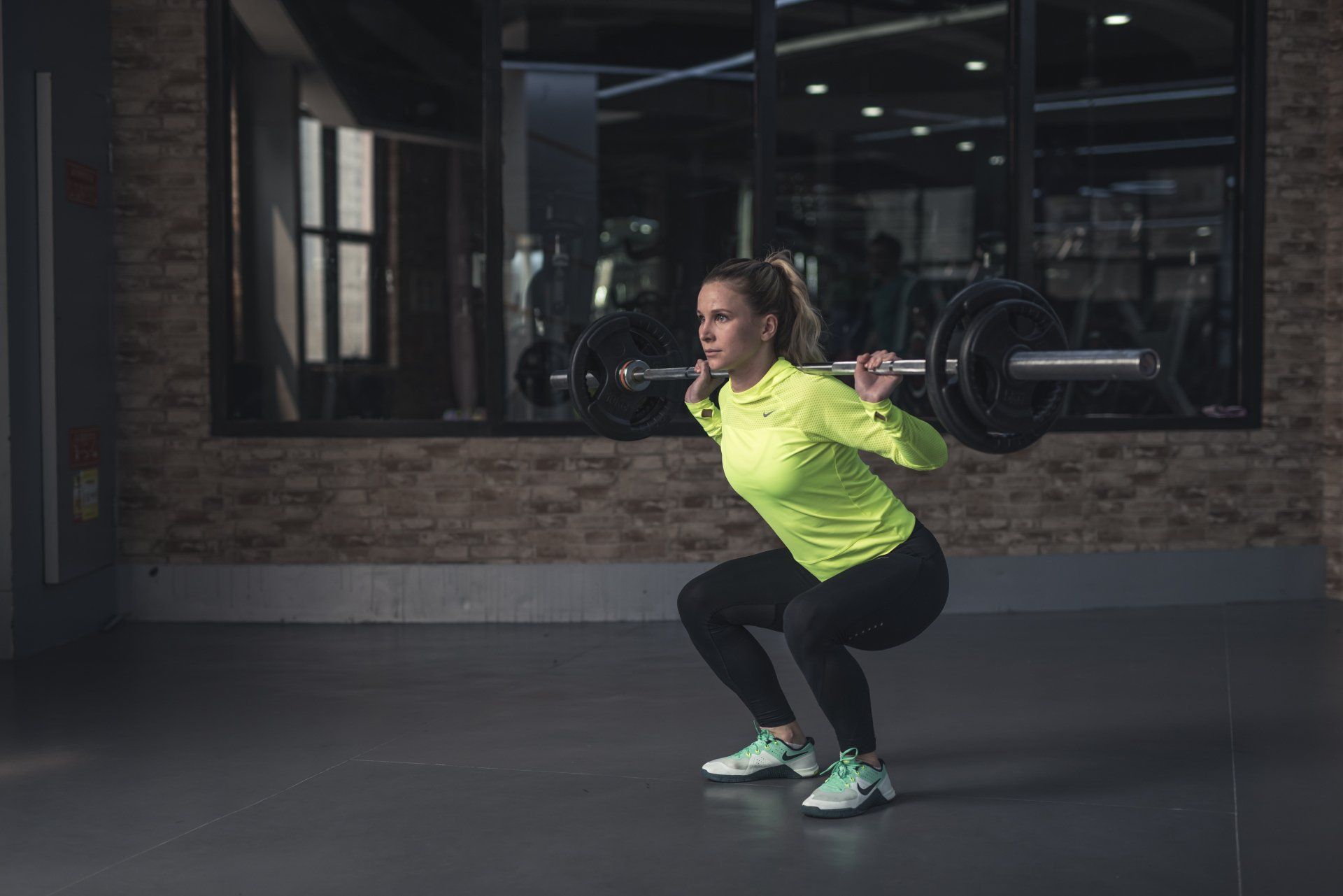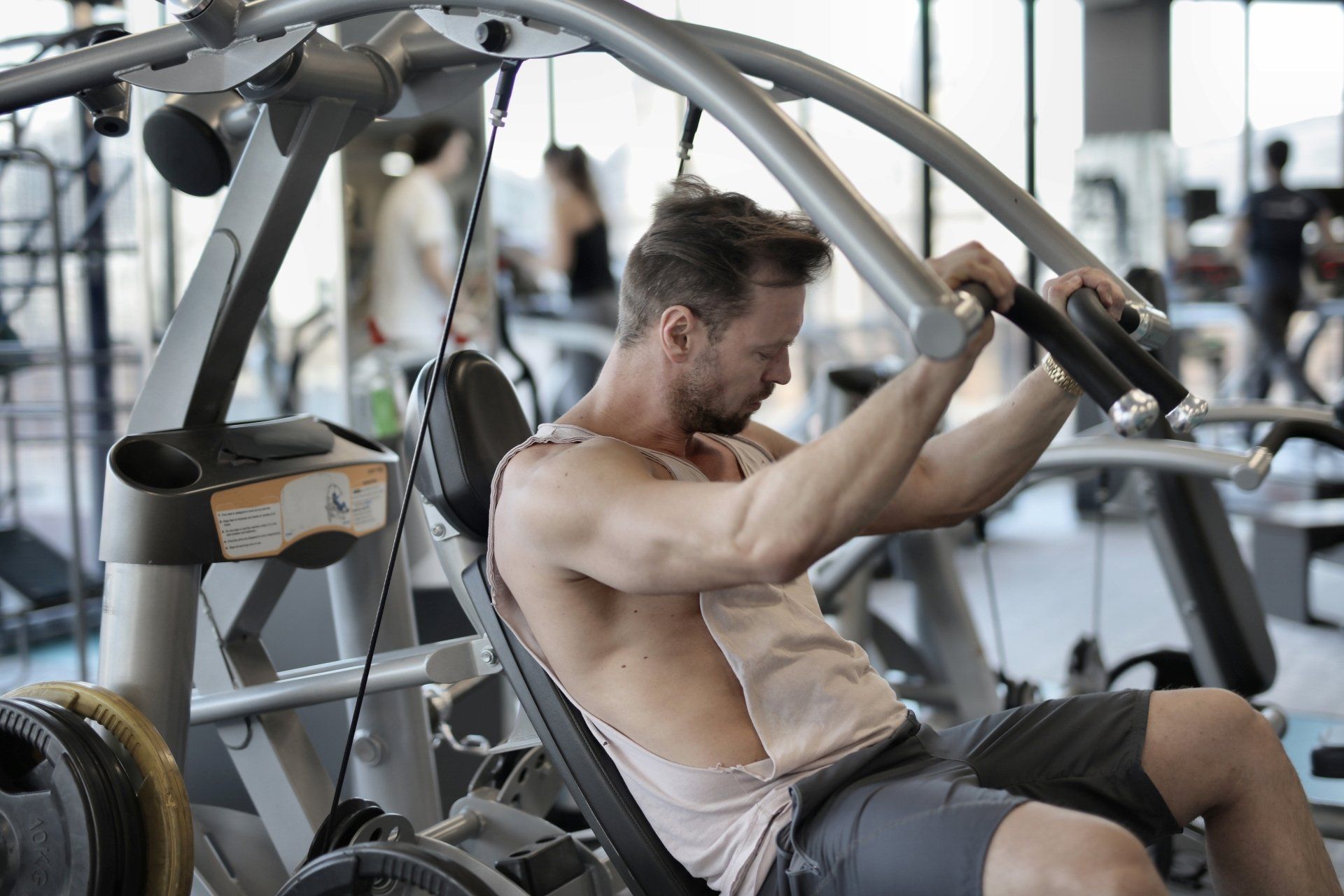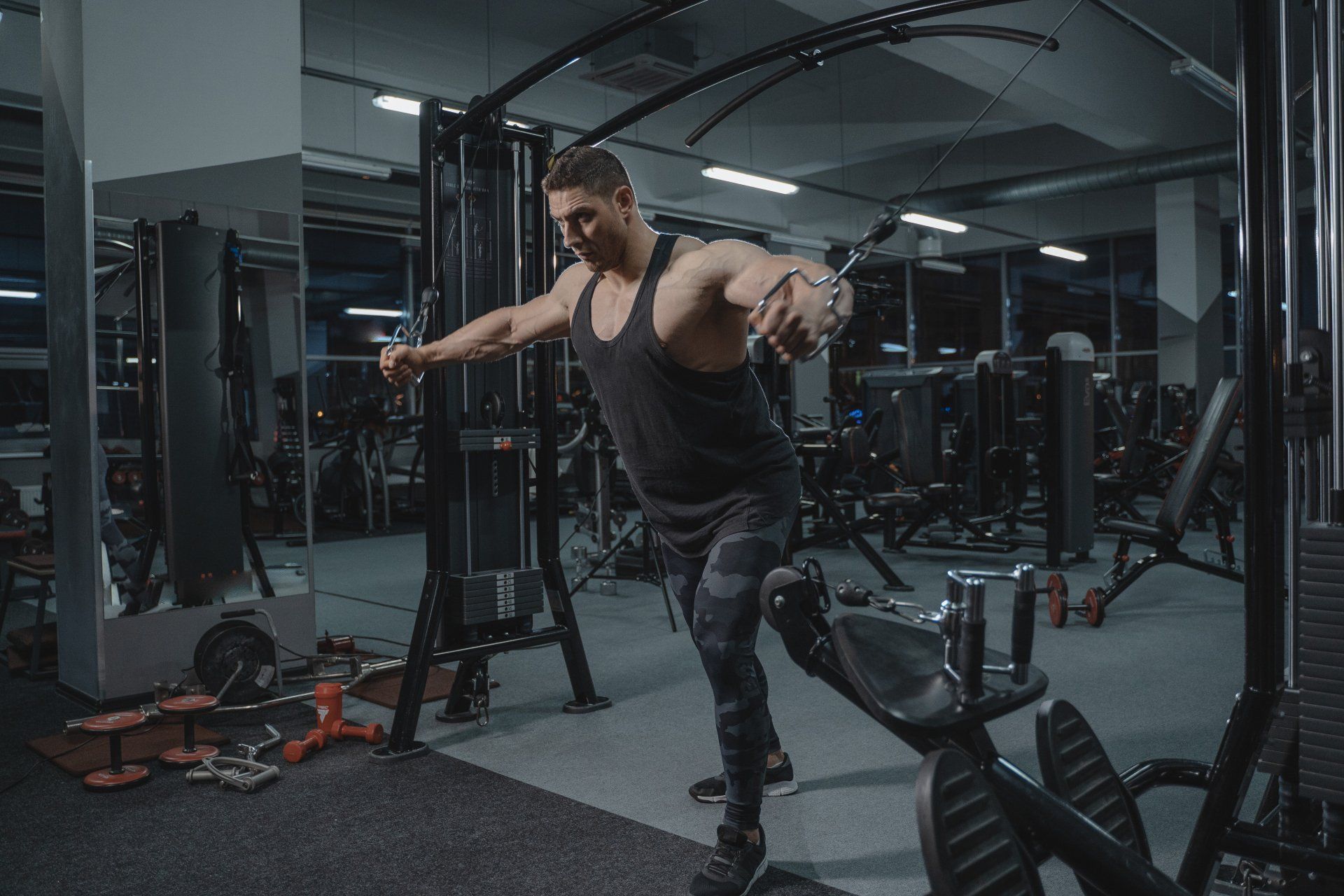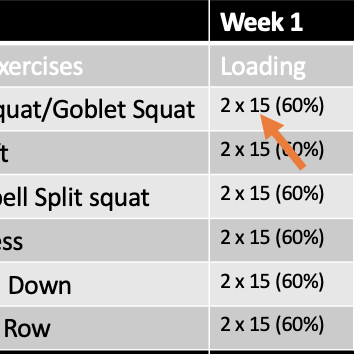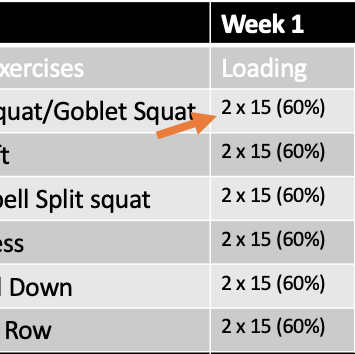Programming Variables
The components needed for building your programme

Remember...
Compound Movements
Isolation Movements
Using one joint such as a calf raise or a bicep curl. Useful for building strength in areas that are weaker than others when performing sport. An example could be the glutes for lower limb performance, which in many cases don’t always activate effectively. Examples above could be a machine or cable type machine.
Repetitions
The number of times you consecutively perform an movement without a rest. Typically, the number of repetitions will depend upon the weight that you're using. Usually, this number will be less than 15, however can be as high as 25 if muscular endurance is the goal.
Sets
How repetitions are grouped together for each exercise, followed by a rest period. This would typically involve between 2-6 sets. The lower the sets, the higher the load, or possibly a lighter loading week before competition. More sets are usually associated to trying to increase the capability of the muscles to deal with volume or to cause muscle damage in order to produce adaptations.
Load
The amount of external weight that’s being lifted during the repetition. This can be an absolute value (such as 50kg) or a relative value in comparison to either your body weight or a percentage of the maximum that you can lift (for example 75% 1RM).
1-Repetition Maximum
The maximum load that you can lift for one repetition. Usually reserved for the main exercises within the training programme. For instance, compound movements. Knowing this figure for key movements is useful for planning your programme, and also for tracking your progress in terms of strength improvements.
Usually you would use a percentage of your 1RM figure to calculate the load needed for that phase of training. If this number goes up, the likelihood is that you're getting stronger. And this can mean a faster attack, quicker start, or indeed better climbing/endurance performance. For safety, a person to spot the lifter, and/or safety bars can be used. Make no mistake, full focus is required throughout.

Rest Period
The time taken between sets. This time can change dependent upon your training goal. Maximum strength benefits from a longer rest period than when aiming to build endurance of a movement or muscle group.
Time under Tension (TUT) or Tempo
The time taken (in seconds) to complete either the full repetition (using tempo) or components of the repetition (using TUT). TUT is split up into three numbers as follows:
Downward/Transition/Upward or Eccentric/Isometric/Concentric. For example, 4/0/1 (5 second repetition)
Tempo is usually slow/medium/fast to remind the athlete of the intention with the exercise.
It’s debated that a slow repetition can cause more fatigue to a muscle which in turn can build fatigue resistance or muscle size. This method of training isn’t used with strength or power exercises, because the aim is to move as fast as possible even if the movement looks slow.
Primary Exercises
Movements that you determine to be the most important to achieve your training goals. For instance, compound movements that directly link to the movements needed in the sport (such as half squat, split squat, leg press). These are entirely dependent upon your goal for that training phase.
Assistance Exercises
These could be core strengthening exercises, or movements that build strength in a particular weakness area. They could also be programmed for an injury that you have previously had, and want to prevent happening again. For example, this could be spinal extensions or shoulder retractions because of previously suffering from back pain, or because of spending lots of time on the bike in a rounded-shoulder position.

Training Phase
Button
Periodization
Button
Training Phase
This is determined by how you organise your sets, repetitions and tempo. For example, it could relate to pre-season or in-competition. Alternatively, it could relate to endurance, hypertrophy, strength or power dependent upon how you choose to split up your training. A phase of training usually lasts between 4-8 weeks dependent upon time availability and how you respond to the training. If you accommodate quickly to it, you would change the stimulus more frequently.
Periodisation
Is a term that essentially means long term planning. By working backwards from an event or point in time, you can organise your training to have the best opportunity to achieve your goal. It allows you to space out your training effectively.
This topic is addressed in detail in it’s own article.
Now that the most common terms have been covered, lets look at some types of training that you may want to use dependent on what your goals are.
Strength Endurance
Building capacity. This form of training is effective for developing changes within your muscle structure. Briefly, It helps to increase the number of energy-producing cells within the muscle fibers called mitochondria, as well as develop capillaries (blood vessels) supplying the muscles. This means that carbohydrates can be broken down and used to fuel performance more efficiently, and oxygenated blood can flood into the working muscles faster, maintaining performance. Typically, training involves high numbers of repetitions (20+) with a load equivalent or higher than 30% of 1 repetition maximum.
Hypertrophy
Increasing muscle size (known as anabolic). Or with some tweaks to programming, a safe way to lift load and improve technique (neuromuscular co-ordination). In turn this will help improve strength. This training is characterised by producing damage to the muscle fibers, in order to cause repair. This damage can be caused by muscle microtears or maintaining lactic acid within the muscles for a period of the training session (or both). The repair process causes the muscles to rebuild slightly larger than before. With time, this repair becomes noticeable in the form of an increase in muscle size. As a side note, hypertrophy for endurance athletes is extremely difficult, due to long periods spend in a catabolic state, where you fuel via the breakdown of muscle fibers. This means you're extremely unlikely to add significant mass. If it was that easy, you'd see the average person who goes to the gym with arms like a spartan. Clearly, this isn't the case.
Maximal Strength
Get strong. The benefits of weight training for cycling are well documented within the academic literature. In short, increased strength means more force into the pedals for accelerations, and steep sections of climbs. Stronger athletes also use less of their maximum, meaning they can stay fresher for longer during events.
Power
Get fast. This type of training can be loaded or unloaded. Loaded examples would be explosive movements such as a clean and jerk (or variations) and squat jumps. Unloaded can also be termed plyometric exercises, such as jumps and hops. The reason that eventually you need to include power-based exercises into your programme is because once you are able to move a load, you need to learn how to move it quickly. Moving it quickly can be the difference between two athletes of similar strength. So for accelerating, or on steep parts of climbs, large powerful movements can be extremely beneficial. On the track, the start will become faster, too. It also means your cadence can increase. This means the same force produced in less time. Because it takes less time, it's more energy efficient. That maybe a very small amount in a single pedal stroke, however over the course of an event, it will certainly make a tangible difference.
If this list is missing an item that you’re looking for, please use the box below to send us a message!

